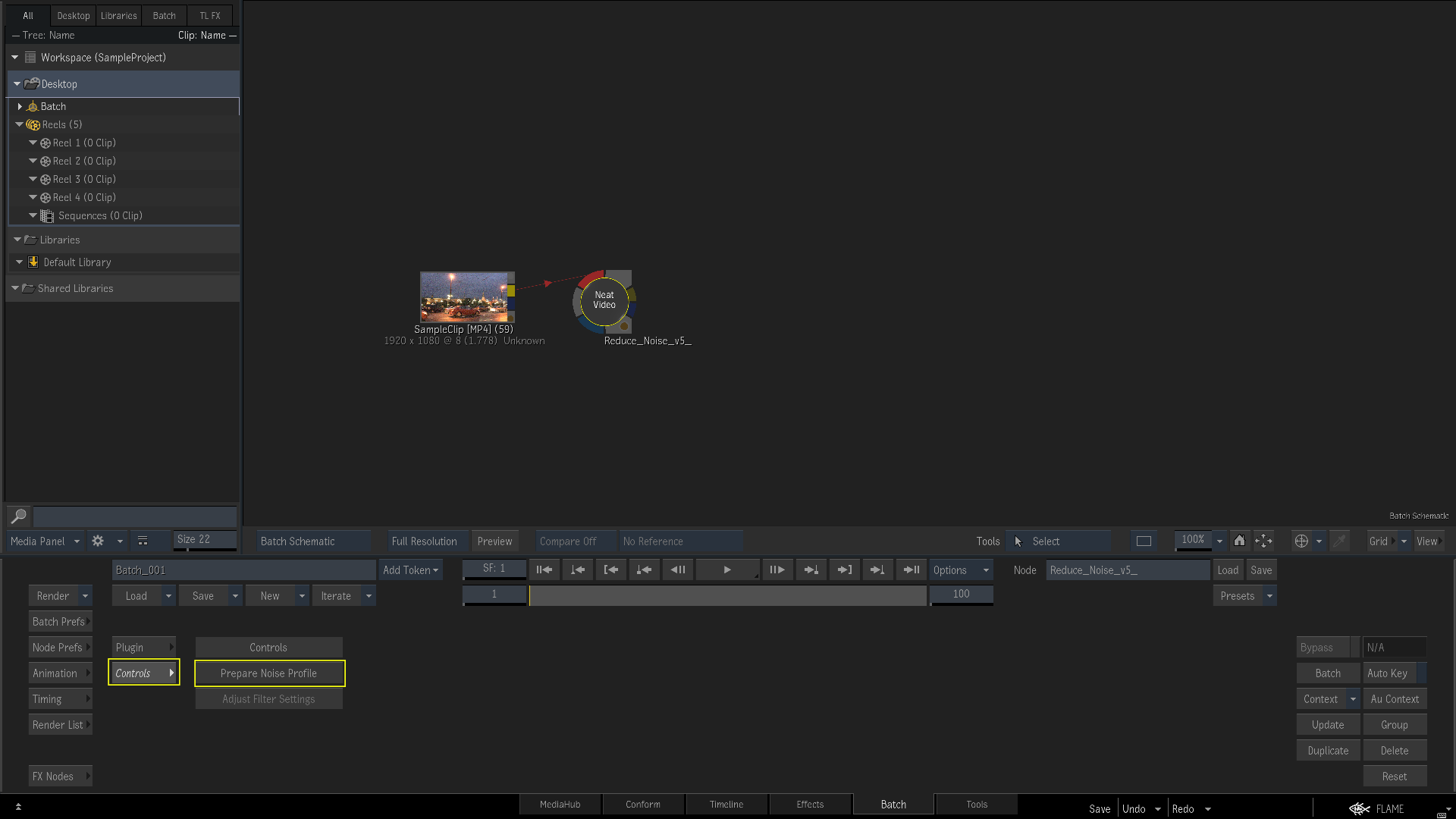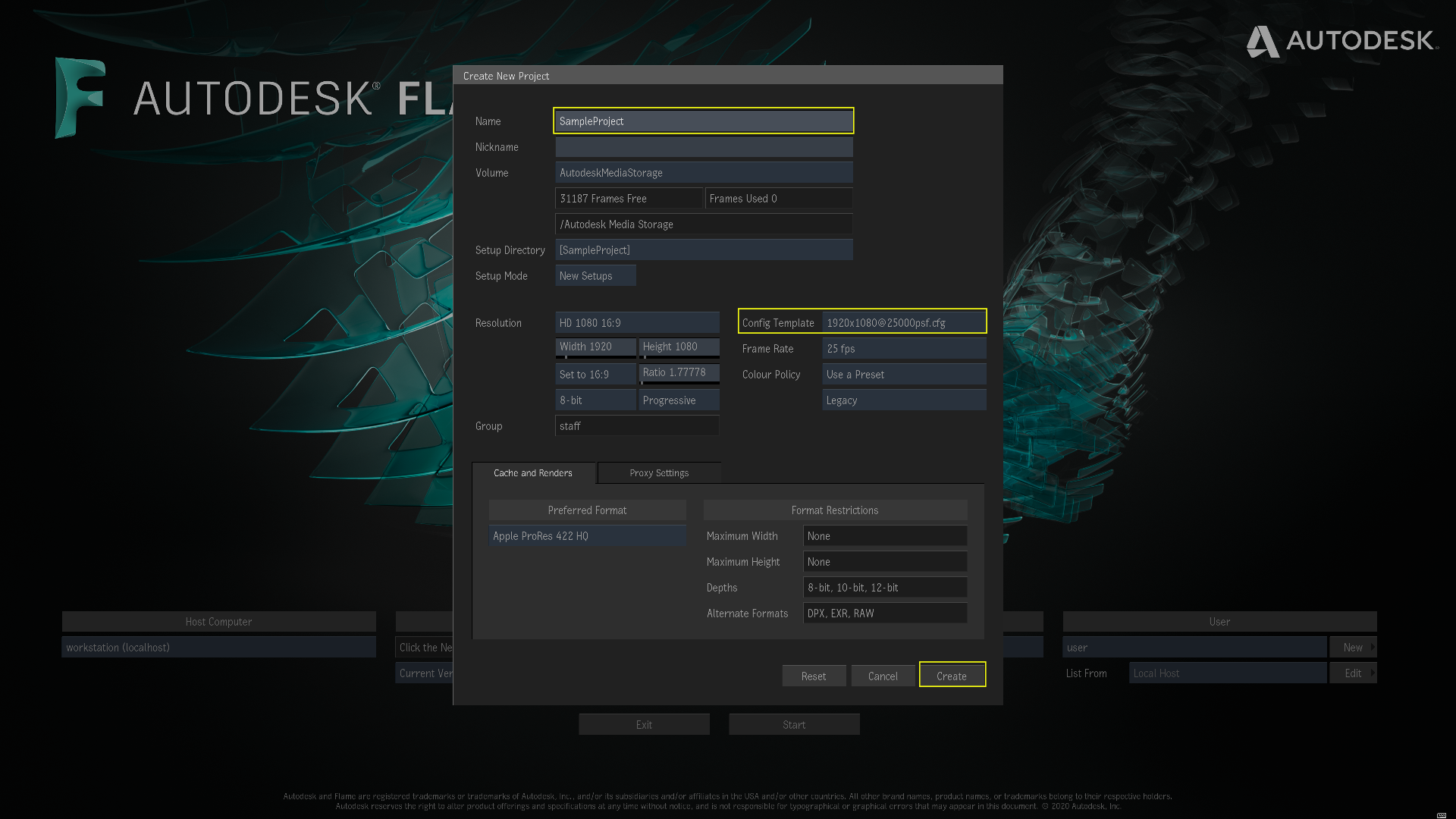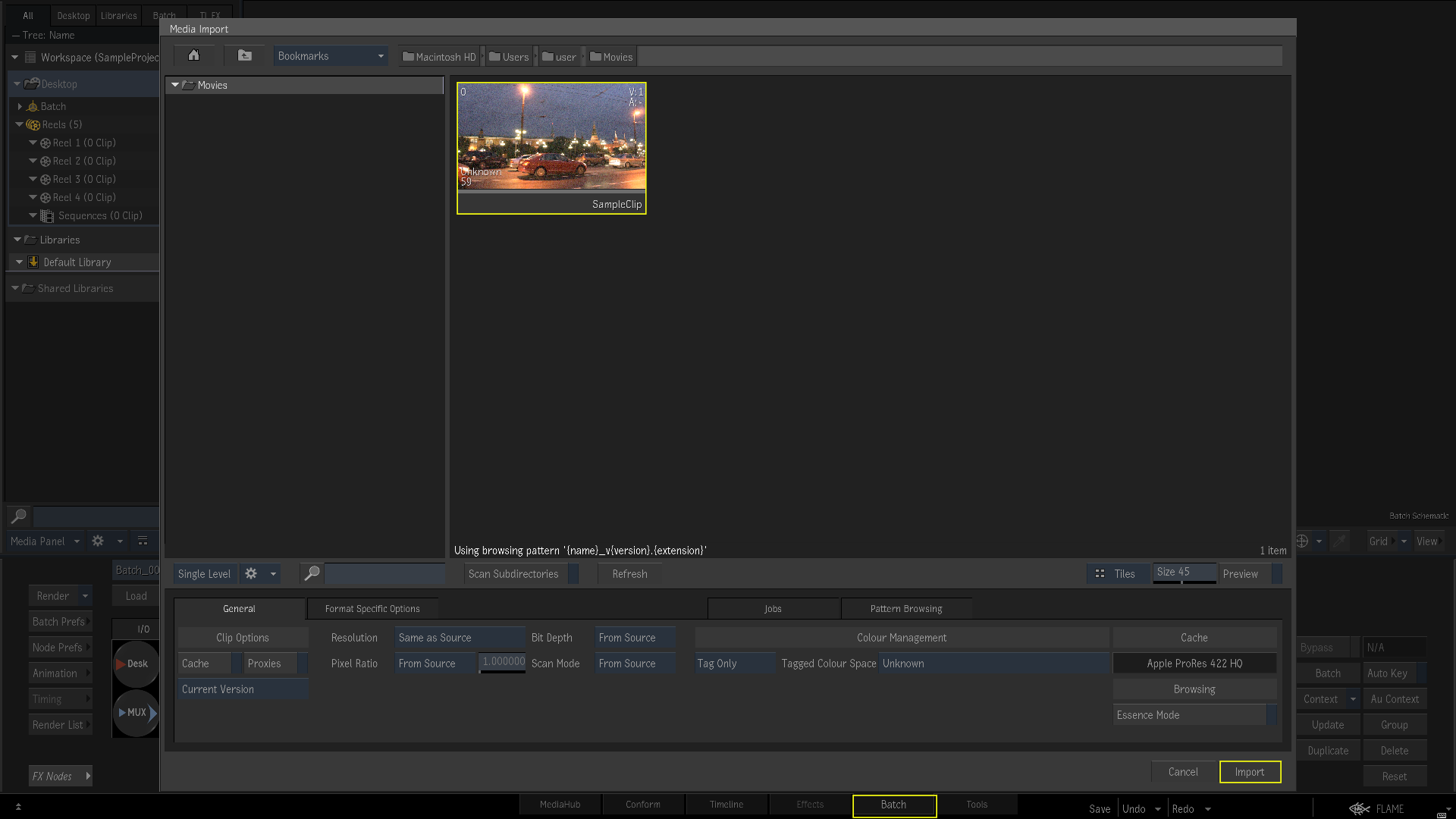QSG — How to denoise video in Flame
This article was updated on Mar 2024.
This guide is for Neat Video v5 plug-in for OFX hosts being used with Flame 2020.
If you use another Neat Video plug-in or another video editing application, please select the corresponding quick start guide.
1. Installing the plug-in
To install the Neat Video OFX plug-in:
- Make sure you have started Flame at least once before installing the plug-in. If you have not done it yet, start Flame and exit it.
- Download the installer of Neat Video for OFX hosts:
- If you already purchased the product and have a current license for the Pro (or Studio) plug-in, please download the Pro (Studio) plug-in from My Products page
- If you want to try Neat Video before purchase, please download the Demo plug-in from Download page
- Starting the installer:
For MacOS:
a. Double-click the downloaded DMG file to mount the disk image
b. In the mounted disk image, double-click the Install file to start it
(you may be prompted to enter the Name / Password of the MacOS administrator account)
For Linux:
a. Double-click the downloaded TGZ file to open the archive
b. Extract the contents of the archive to the desktop and then double-click the extracted RUN file on the desktop to start the installer
(you may be prompted to enter the Name / Password of the administrator account)
- Proceed through the steps of the installation process. Use the default settings offered by the installer.
- Start Flame and right-click in the Node Graph panel in the main window of Flame. Then find Neat Video > Reduce Noise v5 in the list.
If Neat Video has not become available in Flame, please contact Neat Video support for assistance.
2. Running Neat Video on a sample video clip
Please download the test-kit prepared to help you start using Neat Video. Having downloaded, please unzip it to a new folder on the hard disk.
The test-kit includes a sample video clip: SampleClip.mp4. This is a typical video clip captured by a digital video camera in high-gain mode. Some technical information about the sample clip is available in the SampleClipInfo.txt file.
Please start Flame and go through the steps below to clean the clip using Neat Video.
2.1. Add the sample clip to the project
1. Configure a new project in Flame
Launch Autodesk Flame and press New button in the Project section.
In the Create New Project dialog, enter in the Name field "SampleProject " and select in the dropdown list Config Template value "1920x1080@25000p.cfg"
Then press Create button.
2. Add the sample clip file to the project
Switch to the batch page and drag the Import node from I/O section onto Batch Schematic canvas. In the Media Import dialog navigate to SampleClip.mp4 and press Import button
2.2. Prepare to add Neat Video to the clip
Switch to the FX tab and drag OpenFX node onto Batch Schematic canvas near the SampleClip node.Then double click on OpenFX node
and in the Plugin section press dropdown the Load Plugin and select Neat Video > Reduce Noise v5

2.3. Configure Neat Video
On the canvas connect the SampleClip node with the Reduce_Noise_v5 node. Then press Prepare Noise Profile button in Controls section.

The Neat Video plug-in window will open and display the current frame from the clip.
- At this point Neat Video will ask to specify the scan type of the clip. Please select Progressive.
- Click the Input Data Type button in the bottom of the Neat Video window and select Linear:

2. Build a noise profile for the clip
To reduce noise in this frame and in the whole clip, Neat Video needs a noise profile describing the noise properties of the clip. You can prepare such a profile using the Auto Profile function:
-
In the Prepare Noise Profile tab
 click
click 

Neat Video will automatically find an area without details and will analyze noise in that area to build a new noise profile:

- Visually inspect the selected area. It should contain no visible details, only noise; otherwise the noise profile and subsequent noise reduction may be inaccurate.
If the selected area does contain any details, then move the selection to a featureless area or simply draw a new selection in such an area (the selection must be at least 32x32 pixels large). Then click the Build Profile button.

- After that the noise profile is ready and Neat Video can reduce noise in the clip.
3. Check Preview
- Switch to the Adjust and Preview tab

You will notice that Neat Video has already applied noise reduction based on the default filter settings and the preview shows a clearly visible difference: there is less noise than in the original frame.
You can try to adjust the filter settings and see how that affects the results. For example, try to adjust the Temporal Filter > Radius setting (in the Temporal tab in the Filter Settings box in the right part of the window) from 2 to 1 or to a higher value. This will apply weaker or stronger temporal noise reduction to the frame (see the user guide for more details).

4. Apply the changes
- Click
 in the bottom of the plug-in window.
in the bottom of the plug-in window.
Neat Video will save the current settings and close its main window.
(If you run the Demo plug-in, it will also describe the limitations of the Demo version at this point).
Once this step is completed and Neat Video window is closed, the filter is ready for work.
To preview result of filtration switch view box from Batch Schematic to OpenFX Result mode:

2.4. Apply the changes
You can now use the output of the Reduce Noise v5 node in your further workflow within the project. The noise reduction is automatically applied to the video data produced by that node.
Please see the User Guide for more details about adjusting the filter settings and other aspects of using Neat Video. These Video Tutorials will also help you to get the most out of Neat Video noise reduction.
Get the full version
Happy with the denoising results provided by Neat Video Demo? Then it is time to get a full license for your current and future projects.




